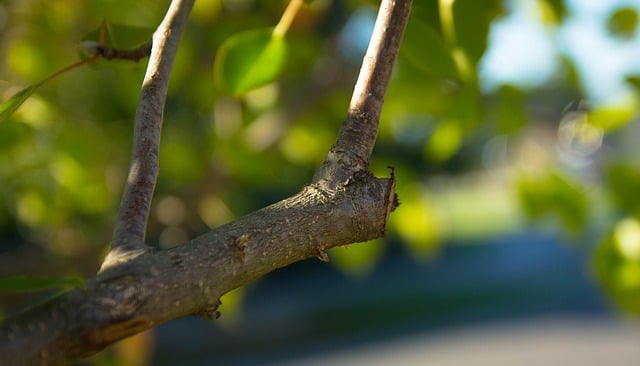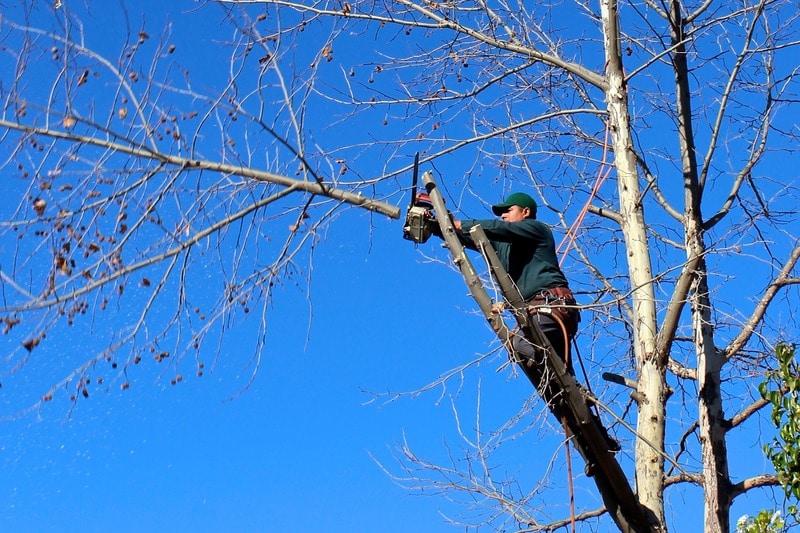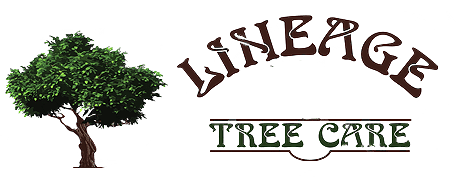We’ve talked about pruning and the best time to prune, which is not necessarily the fall, but sometimes you have to prune a tree to keep it beautiful and vibrant. We’ve discussed the drawbacks to pruning in the fall, primarily because it stimulates new growth and you want the tree to rest and go into a dormant stage at this point. However, there are some signs that your tree is actually giving you when it wants to be pruned. Whether it’s in the fall, albeit carefully, or in the spring, when the time is right, here are 10 signs that it’s time to prune your tree.

Broken branches.
If you see a limb or broken branch from a windstorm or other damage, it can be hazardous if not taking care of right away. This could happen after a storm or a heavy wind sweeps through your area. At this point, it’s okay to take down those broken branches and if they are too large, hire a professional tree care specialist.
Cracks.
If you see several cracks in your tree’s bark, it could be a sign that your tree is under stress. Have a professional tree care specialist come out and take a look at the stress on your tree. If it is diseased or it is starting to rot, it could be extremely hazardous. Having an evaluation can give you the best option when moving forward.
Crossing branches
Branches 10 to cross on trees that are not tended to such as fruit trees. This can expose the interior of the branch and rub against each other causing decay. Although it should be done in the spring, trim any branches that cross and touch each other. More on Pruning
Deadwood
If you see large sections of deadwood on the tree or on branches, it could be hazardous and it could imply that the tree is dying. It’s good to remove the decay regardless of the time of year to save the entire tree.
Branch density
If a tree is so thick you cannot see through it, it’s probably time to trim it back. This could be hazardous as it causes week branches on the inside, making them fall during any wind damage.

Untidy branches
Wild or untamed branches that have either reached a house or a structure, telephone wires or poles, or other areas that you don’t want them to touch can be hazardous. In this case, it’s best to call an experienced tree care professional to have them remove larger branches or the entire tree.
Sunken bark
Also called tree canker’s, this sunken part in bark or if it’s completely missing can be a sign of disease or decay. It can weaken the tree making it fall during a windstorm.
A dead main branch
Also called a leader branch, these main branches of the tree can compete with each other for dominance. Proper pruning to select the branch that should be dominant is a good way to keep the tree fit.
Wrong direction
Trees naturally grow towards the sun, but if they’re planted in an area with a lot of space, they may grow outward rather than upward. This can lead to heavy branches that may collapse under snow or in a windstorm. Properly pruning the tree to grow as it should help not only the well-being of the tree but the protection of your property.
Miss-shaped trees
If trees are not pruned regularly they won’t grow the way you want them to. A miss-shaped tree doesn’t distribute its weight proportionately and this could lead to trees damage or even property damage.
If your trees are experiencing any of these issues and you need a professional opinion, give us a call. We’d be happy to evaluate the severity of the tree and keep your property, home, and any pets and people safe.
